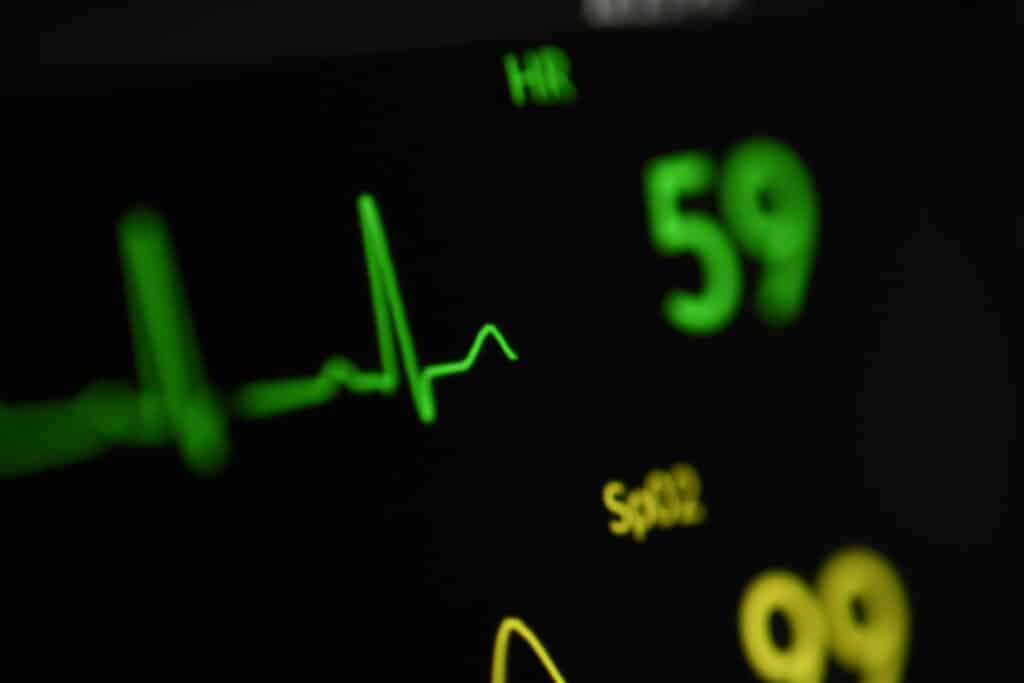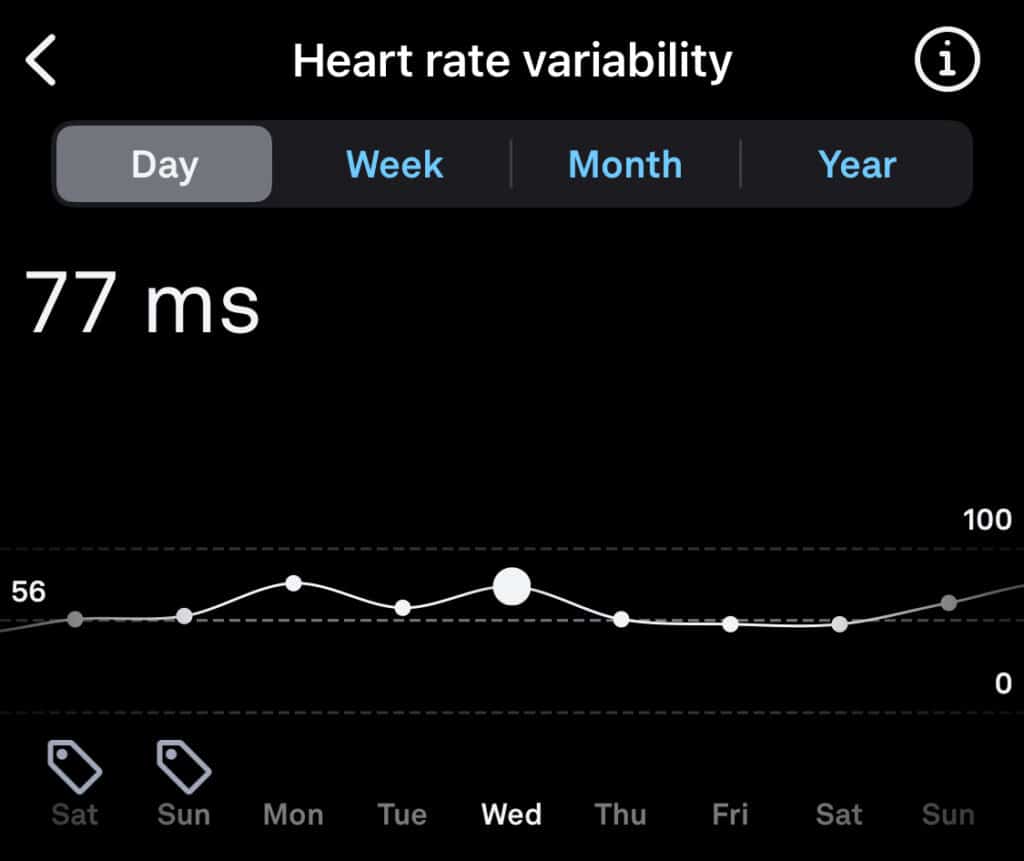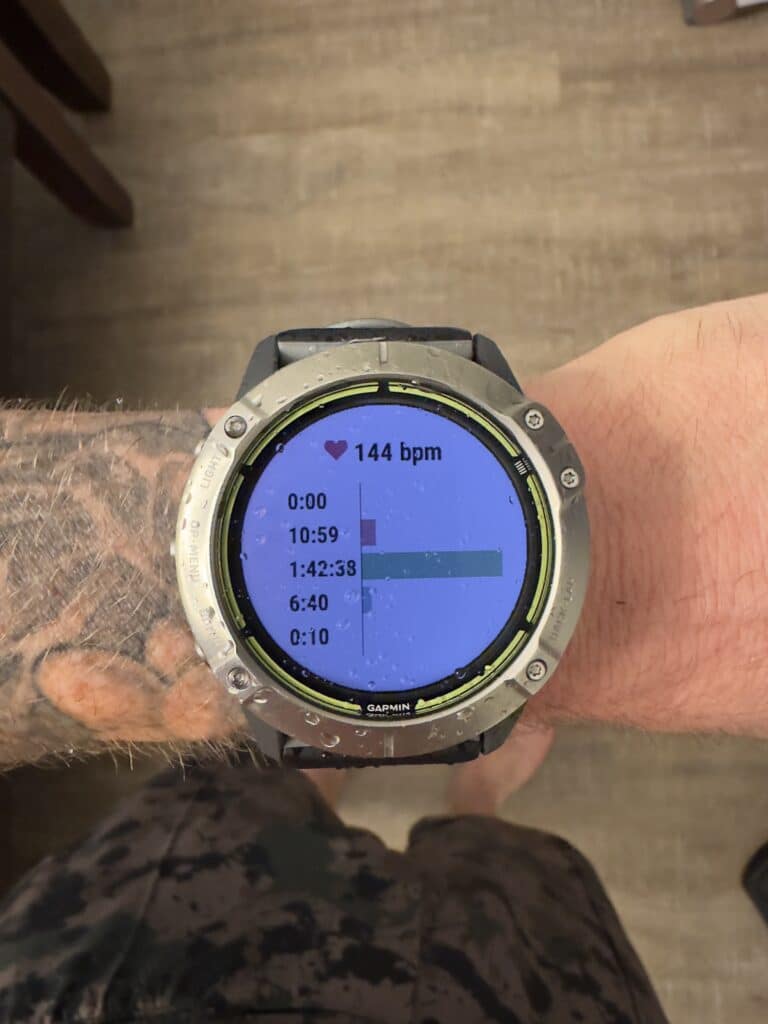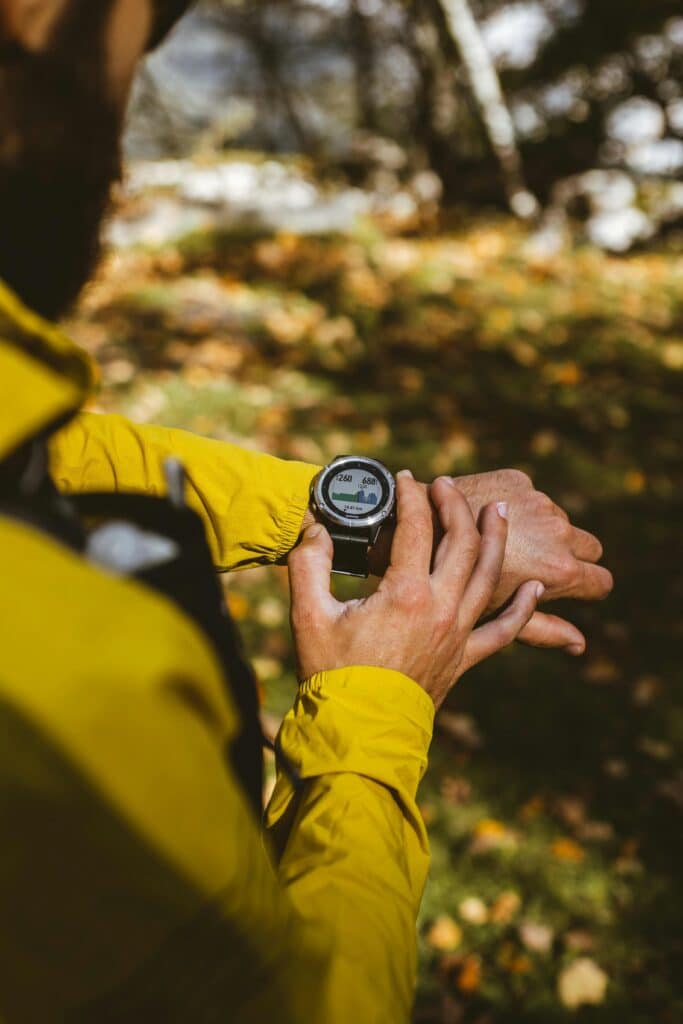We all want to see the fruits of our labor, right? Why would we do anything, other than something that’s purely pleasurable, if we can’t eventually note measurable progress? Well, unless we are seeing measurable results, or we’re getting some kind of pleasure, we typically stop doing the thing. So, we need to give ourselves reasons to keep doing the thing.
Fitness progress can feel slow because, well, sometimes it is. However, sometimes you’re making progress and you don’t realize it because you just don’t know how to measure it. That’s especially true of progress with conditioning, particularly low and slow aerobic conditioning – something that we all need.
Below, I’ll outline a handful of ways that you can track your fitness progress to help you stay the course and also deepen your understanding of conditioning progress.
Decrease in Resting Heart Rate
Your resting heart rate is your heart rate…at rest. Your official resting heart rate is the lowest number of beats per minute while you’re sleeping. But you can also measure it immediately upon waking and before having caffeine, and that serves as a decent proxy.
As your aerobic fitness increases, your resting heart rate decreases. This happens for several reasons.
First, your heart pumps out more blood with each beat. That means it has to beat fewer times to deliver the same amount of oxygen and nutrients to your body. This is, as Martha Stewart used to say, a good thing.
Along with this are changes in your vasculature. Capillary density increases, decreasing the overall pressure in the system at rest.
Second, heart rate is controlled by your autonomic nervous system. Your autonomic nervous system has two branches – sympathetic and parasympathetic. Fight, flight, or freeze responses are controlled by your sympathetic nervous system. Rest and digest responses are controlled by your parasympathetic nervous system. Increases in aerobic fitness shift the balance of your autonomic nervous system more toward parasympathetic. It chills you the fuck out, man.

You’ll see that a “normal” resting heart rate is somewhere between 60 and 100 beats per minute. But normal in this case does not mean fit or healthy. A resting heart rate below 60 bpm is a sign of good aerobic fitness.
Increase in Heart Rate Variability
Heart rate variability (HRV) is the variance between each heartbeat. You might think that the space between each heartbeat is uniform, but it isn’t. And the less uniform, the better. That is a sign that your autonomic nervous system is in good balance and the parasympathetic branch has slight dominance. Why is that a good measure of aerobic fitness?
As we discussed in the previous section, there is a link between cardiac function and autonomic nervous system function. As cardiac function improves, so, typically, does autonomic nervous system function, shifting more toward the parasympathetic end of things.
There is a caveat. You’ll most likely see HRV increase during training phases and blocks with appropriate amounts of low- to moderate-intensity aerobic training. Training phases and blocks with a lot of intense conditioning may temporarily decrease your HRV even though your conditioning is improving.

The key with HRV is looking at trends on a weekly, monthly, seasonal basis, and yearly basis. You may see fluctuations from day to day. If you do an intense training session, your HRV might be down the next morning. But if you do a moderate-intensity aerobic workout, it’ll likely come up the next day. Your HRV may decrease over the course of a week or a month, but on average increase during the course of a season or training block.. The point is to look at trends over time. If, on average, it’s risen over the course of months or a year, you’re making progress.
Faster Heart Rate Recovery Times
Quick recovery after intense exercise is a sign of a well-developed aerobic system. It means you’re able to efficiently shift from fight or flight to rest and recovery. It also means that the architecture of your aerobic system is working well. Your heart is pumping out more blood with each beat. Your capillary density has increased. Very nice things like this are happening. So, you’re able to shift your nervous system tone, get blood to where it needs to go, and relax much faster. Bonus, you’re able to do more repeat efforts of intense work. That means more intervals at a higher intensity, which in turn will improve your fitness.
So, if you’re noticing your heart rate drop faster between intervals, between sets, or at the end of a workout, your fitness has improved.
Increased Work Rate at the Same or a Lower Heart Rate
Have you ever been on the bike, the rower, the ski-erg, etc., and noticed that you went farther in the same amount of time while your average heart rate stayed the same, or even decreased. Then you noticed that trend continuing. That, my friend, means that you improved your conditioning.

When you can do more while keeping your heart rate down it means that exercise is imposing less stress on your body. Exercise costs you less. And, really, that’s the whole point of training. You increase your threshold for physical stress. You are better conditioned.
You’re Able to Handle Greater Workloads in General
Think of an activity or a workout that you’ve done more than once. Maybe it was a particularly spicy conditioning workout at the gym. Or maybe it was a gnarly hike. Let’s say the first time you did that hike, it took you days to recover. We’re talking about sore legs and cheeks for a week. Let’s maybe even say you couldn’t quite finish the hike. You turned around at the bottom of the final hill while your friends continued on. You didn’t at all like that. So, you started training.

You take your ass on that hike again three months later. Not only do you make it up that last hill, but you’re not wrecked for days afterward. You’re maybe a little sore the next day, but that’s it. Well, that means you can now handle greater workloads. And that means you are better conditioned.
Track Your Progress
Pick one, two, or three of these things and track them. Really pay attention. You’ll notice that if you’re training consistently and with appropriate intensity and volume, you’re making progress. You’re reaping the fruits of your labor. Just keep in mind that fitness takes time and effort. As we’re all reminded during the driving montage from Rocky IV, there’s no easy way out.
You might also like:
- HOW TO SET GOOD GOALS
- LIVE PHYSICALLY IN 2024
- 3 WAYS TO INCREASE MUSCLE MASS
- LIVE YOUR EVERDAY ADVENTURE
- WHEN CAN YOU EXPECT REAULTS FROM TRAINING?
- WHY STRENGTH SHOULD BE YOUR MAIN FOCUS DURING THE FALL AND WINTER
- YOU’RE NOT OLD, YOU’RE JUST ACTING LIKE IT
- BUILDING RESILIENCE: HOW MOBILITY TESTS ENHANCE YOUR STRENGTH TRAINING
- RELATIVE STRENGTH: WHAT IT IS, WHY WE TEST IT, AND HOW TO BUILD IT
- LIFE BEYOND YOUR GYM GOALS
- THE MOST IMPORTANT FITNESS VARIABLES: CONSISTENCY AND CONTINUITY
- EUSTRESS TRAINING: HOW TO LIFT WEIGHTS AND MANAGE STRESS AT THE SAME TIME
- WANT TO MAKE PROGRESS? PUT SOMETHING HARD ON THE CALENDAR
- STRENGTH LOVES REST: WHY YOU NEED LONGER REST PERIODS TO BUILD STRENGTH
- HOW TO RECOVER FROM YOUR WORKOUTS
- MORPHEUS HEART RATE TRAINING: WHAT IT IS, WHY WE USE IT, AND HOW YOU CAN GET THE MOST OUT OF IT
- START NOW: WHY WAITING FOR THE PERFECT TIME IS THE WORST THING TO DO
- HOW (AND WHY) OUR YEAR-LONG TRAINING PLAN WORKS
